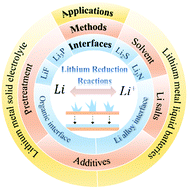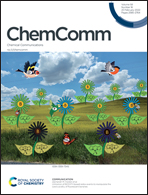Lithium reduction reaction for interfacial regulation of lithium metal anode
Abstract
The lithium metal anode (LMA) is regarded as a very promising candidate for next-generation lithium batteries. The interfacial issue plays a pivotal role in affecting the lithium plating/stripping behavior, Coulombic efficiency and cycling lifespan of an LMA. The lithium reduction reaction (LRR) is an advanced regulating technique for optimizing the LMA interphase, which intelligently utilizes lithium metal itself as an interphase precursor. This strategy also possesses moderate operating conditions, high efficiency, great convenience and scalability. In this review, the latest developments of LRRs in interfacial regulation for LMAs are summarized, focusing on the interfacial regulation mechanism and the construction of various inorganic/organic interfaces in lithium metal liquid/solid batteries. The target interface properties and corresponding influence factors during LRRs are investigated in detail. Besides this, the superiority and insufficiency of LRRs are discussed and possible directions for LRRs are presented. This review highlights in situ modification characteristics for anode interface regulation during the LRR and can be extended to other metal anodes such as sodium, potassium and zinc.



 Please wait while we load your content...
Please wait while we load your content...